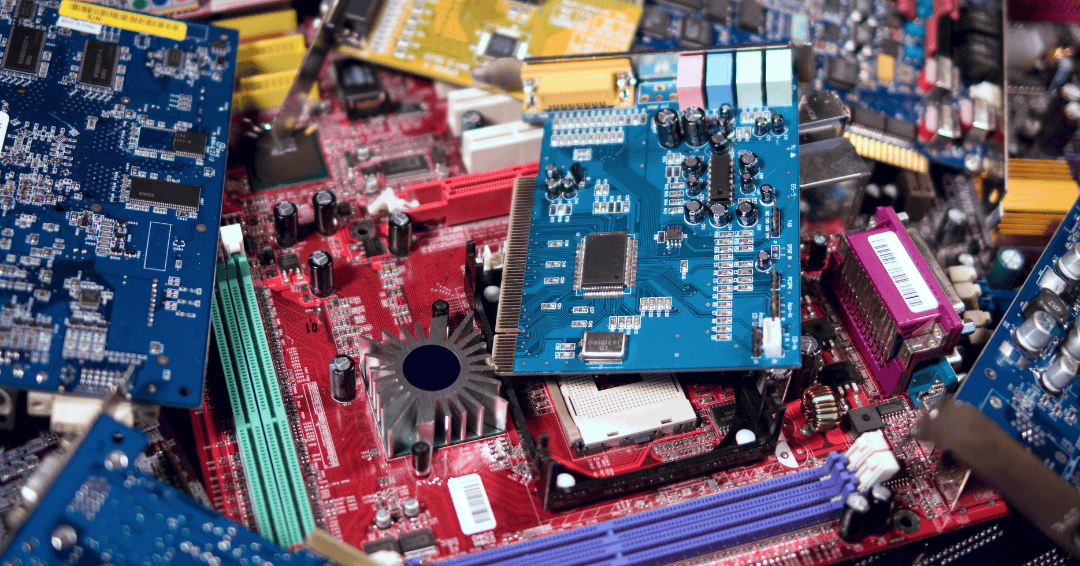If you’re looking for a secure and reliable way to dispose of your hard drives, solid-state drives, and other storage media, onsite shredding services may be the solution you’ve been searching for. Shredding is the process of physically destroying your storage media, rendering all data on it unreadable and irretrievable.
Onsite shredding services offer the added benefit of convenience, as a shredding truck will come directly to your location to destroy your drives on the spot.
But before you schedule an appointment, you likely have some questions about the process. In this set of FAQs, we’ll answer some of the most common questions about onsite shredding services.
Contents
2. Why should I choose onsite shredding?
3. How do I prepare for onsite shredding?
4. What types of media can be shredded?
5. Can I just delete the data on my hard drives?
6. What are other data destruction options?
7. How does shredding destroy data on a hard disk drive (HDD)?
8. How does shredding destroy data on solid state drives (SSDs)?
9. Is there anything that cannot be shredded?
11. Can mobile phones be shredded onsite?
12. How big is an onsite shredding vehicle?
13. Does an onsite shredding vehicle need power?
14. Can I witness my drives being destroyed?
15. How many drives can be shredded in a day?
16. What happens to shredded material?
Do you need a checklist for secure data?
1. What is Onsite Shredding?
Onsite shredding of hard drives is the process of physically destroying hard drives by reducing them to small pieces using a shredder on your premises. This ensures that your confidential data are irretrievable and that you comply with data protection regulations.

2. Why should I choose onsite shredding?
Onsite shredding offers several advantages over other methods of data destruction. First, it eliminates the risk of data breaches during transport. Second, you can observe the process, giving you peace of mind that your confidential data are destroyed. Contact us if you would like to find out more about this service.
3. How do I prepare for onsite shredding?
Preparing for onsite shredding of data storage media involves several steps to ensure that the process is carried out efficiently and effectively. This includes identifying the hard drives to be shredded, choosing the right shredding company, and checking that certification will be provided. For a comprehensive list of things to consider when preparing for onsite shredding, download our onsite shredding checklist.
4. What types of media can be shredded?
Electronic media that can be shredded onsite include hard drives, solid state drives, cell phones (with batteries removed), tablets, USB drives, CDs, DVDs, and floppy disks. Shredding onsite guarantees that the data are destroyed securely and efficiently.
5. Can I just delete the data on my hard drives?
It’s important to know that simply deleting files or formatting the hard drive is not enough to ensure that the data are permanently erased. These methods only remove the data from view, but the information can still be recovered using specialist software.
There are several different options for securely removing data from your media, including onsite shredding. At TES, we offer a range of secure data removal services tailored to your needs.
6. What are other data destruction options?
Depending on the type of storage media you use, there are several options available to ensure that data are permanently erased. Some of the most common methods are overwriting with software (or data erasure), degaussing, and physical destruction (including shredding).
Overwriting involves replacing the existing data on the hard drive with new data, which makes the original data unreadable. This method involves multiple passes to ensure that the data are completely erased. The benefit of overwriting is that drives can be reused.
Degaussing utilizes a powerful magnet to disrupt the magnetic field on a hard drive, which erases the data. This method is particularly effective for erasing large volumes of data quickly but is only effective on magnetic storage devices, such as hard drives (HDDs).
Physical destruction entails physically damaging the storage media and rendering it unreadable and unusable. This can be done by crushing, puncturing, or shredding.
7. How does shredding destroy data on a hard disk drive (HDD)?
A hard disk drive (HDD) stores digital data on spinning magnetic disks. Inside an HDD are several disks that are coated with a magnetic material and spin at high speeds. Data are stored on these disks in magnetic form and accessed by read/write heads that move across the surface of the disks.
When data are written to an HDD, the write head magnetizes the surface of the disk in a pattern that represents that data. This magnetic pattern is stored as a series of 1s and 0s, which make up the binary code that represents all digital data. To access specific data on an HDD, the read/write heads move across the surface of the spinning disks to the correct location. This process is controlled by a motor that spins the disks and moves the read/write heads.
Onsite shredding is a secure method of destroying data stored on hard disk drives. The process physically destroys the hard drive by shredding it into small pieces that are virtually impossible to reconstruct. Shredding destroys the physical components of the hard drive, including the spinning disk, that store the data.
When the hard drive is shredded, the magnetic particles that store the data are also destroyed. This makes it virtually impossible to recover any data from the hard drive. Onsite shredding is an effective way to ensure that sensitive data held on HDDs are securely destroyed.
8. How does shredding destroy data on solid state drives (SSDs)?
Solid state drives (SSDs) use a type of memory called NAND flash memory to store and access data. This memory is made up of microchips that can hold a certain amount of data, typically 1–4 bits, depending on the type of NAND flash memory. When data are read from the SSD, the controller reads the page from the NAND flash memory and sends it to the host computer.
Physically shredding solid state drives (SSDs) into small pieces is a highly effective way of ensuring that the data contained on them are irretrievable. This is because SSDs store data on microchips, which are incredibly small and densely packed. When an SSD is shredded, the microchips are destroyed, making it impossible to access the data they once held.
Shredding SSDs also helps to prevent any data recovery attempts. Even if someone were to retrieve the physical pieces of the SSD, the data would be completely scrambled and impossible to reconstruct. This makes physical shredding a popular method for businesses and organizations that handle sensitive information and need to ensure that unauthorized parties cannot recover it.
9. Is there anything that cannot be shredded?
Yes, there are some electronic storage devices that cannot be shredded onsite. Some electronics contain hazardous materials, such as lead, cadmium, or mercury, meaning they cannot be safely shredded onsite.
10. What size are drives shredded to?
When it comes to shredding electronic storage devices, the size of the shredded particles depends on the type of device being destroyed, the shredding company’s equipment, and the level of security required by the client.
11. Can mobile phones be shredded onsite?
Yes, mobile phones can be shredded for data security. Shredding a phone is a secure way of destroying the data it contains. The process involves physically breaking the phone into small pieces that cannot be reassembled, ensuring that any sensitive data on the phone are completely destroyed.
It is essential to remove batteries before shredding mobile phones. This is because batteries contain hazardous materials that can cause harm to both humans and the environment. If the batteries are not removed, they can be damaged during the shredding process and may leak toxic substances. Additionally, batteries can cause fires or explosions when they come into contact with heavy machinery during the shredding process.
12. How big is an onsite shredding vehicle?
Onsite shredding vehicles come in different shapes and sizes. Typically, they are designed to be compact yet spacious enough to accommodate the shredding equipment and a holding area.
13. Does an onsite shredding vehicle need power?
Onsite shredding vehicles are equipped with a shredding system that usually is powered by the vehicle’s engine or an electric motor. However, some shredding vehicles are powered by diesel generators, and others even require the client to provide a power source.
For a convenient and hassle-free service, choose TES as your shredding provider. We can operate onsite data shredding service autonomously, with no additional power required. Contact us today.
14. Can I witness my drives being destroyed?
Yes, you can witness the destruction of your hard drives. Witnessing the process can provide an added layer of security and peace of mind that your confidential information has been properly disposed of. Onsite shredding providers typically have a process in place to allow customers to witness the destruction of their hard drives. This process may include having a designated area for observation or allowing customers to watch a live video feed of the destruction.
15. How many drives can be shredded in a day?
The number of hard drives that can be shredded in a day depends on a variety of factors, such as the type of shredder being used, the size and weight of the hard drives, and the required shred size.
Typically, around 1,500 drives can be shredded per day, depending on the factors listed above. Contact us for more information.
16. What happens to shredded material?
Shredded material should be processed for recycling by the onsite shredding company. The recycling process ensures that recoverable materials are reused and that no hazardous waste is left in the environment. It is important to note that proper disposal of the shredded drive components is crucial for environmental reasons. It is best to engage a professional data destruction company to ensure that your hard drives are disposed of securely and responsibly.
Onsite shredding is an important process that ensures the protection of sensitive data. By choosing onsite shredding, you can be confident that your confidential information is destroyed securely and that you are complying with data protection regulations.
Do you want a checklist for secure data destruction onsite?
Planning an onsite shredding? Download the checklist below for secure data destruction onsite.







